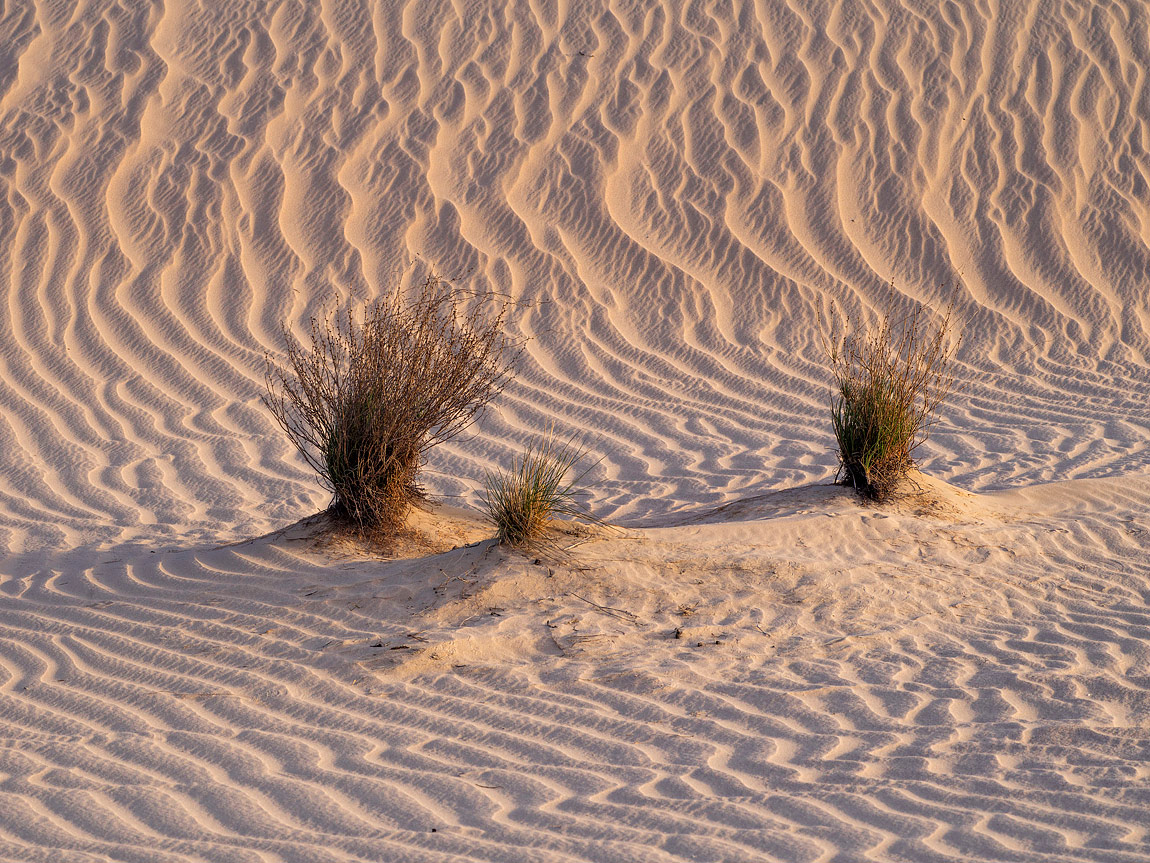Taken just minutes after sunrise on a winter's morning in outback New South Wales, I was able to capture the fleeting shadows of the wind-blasted dunes as the sun tracked skyward. Also apparent is the subtle colour change in the sand itself, perhaps due to moisture content: the softer sand of the upward slope contained less moisture than the harder flat level. The two grass tufts somehow managed to exist in this apparent barrenness.
I used a medium-format Pentax 645Z with an 80-160mm lens. My copy is an older film-era lens, but it works well on the 645Z. The image required minimal post-processing; I only lightened it a little. The lens picked up the texture of the sand beautifully.
I am continually fascinated with dunes of all types, looking for patterns in shapes, the texture of sand, areas of shade and light and the geometry of the abstract environment one can find here. Most shots are of a minimalist landscape devoid of sensational landscape features.
The remoteness and tranquillity of this country are very attractive. However, it is a harsh landscape that demands respect and adequate preparation before venturing into it. Despite this harshness, a surprising amount of fauna inhabit this area, and their tracks are often found as they cross the dunes: reptiles, emus and kangaroos are often abundant.
It's a long drive to get to this location, so I tend to make the most of my days here, taking hundreds of photos. Most of which, I am afraid to admit, are pretty ordinary. But occasionally, I will get one that I am happy with, and this is one of those.


